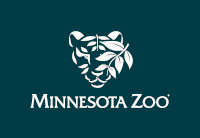In May 2006, Julie Ketterling, Minnesota Zoo Interpretive Naturalist, traveled to Trinidad, West Indies, where she worked with the largest of sea turtles—the endangered leatherback. The program was supported by Earthwatch and Nature Seekers, an organization formed from local Trinidadians concerned about the declining number of leatherback turtles. During the laying season, Nature Seekers sends individuals out each night to patrol the beach. Earthwatch, an international volunteer conservation organization, joined with Nature Seekers to provide volunteers to help with research and provide a presence on the beach to help deter poachers.
The first night, Julie was trained to work with the turtles and was shown how to identify tracks made by a turtle as she came on to land to lay, in addition to the stages a female goes through as she lays her nest. Once she started to lay eggs, she would be checked to see if she had a pit tag, or microchip inserted in the shoulder used for long term population tracking. Using a scanner, the pit tag was read and recorded. If she didn’t have one, a tag was inserted. Next the team checked for two metal hind flipper tags. If she didn’t have these, two tags were attached and recorded. Lastly, the length and width of her carapace was measured and she was checked for damage to her shell or flippers.
One night, while making their way to the beach patrol zone they came across a large black mass washed ashore. As they got close, they noticed the unpleasant smell. Soon, they were able to see that it was a large fishing net with something large caught in it. At first it looked like a black whale, but then they were able to tell that five leatherback sea turtles had gotten tangled. They found one still alive and acted quickly to free her. The net was tight around her front flippers and had started to imbed in her skin. It took three people to hold her down, while two cut the rope away but they were able to cut her free and watch as she swam away. To Julie, it was a priceless moment to know that she helped saved her life.
Julie left Trinidad and the leatherbacks with a greater knowledge and appreciation for the hard work that goes into conservation and knows that the experience is one that she will take with her for the rest of her life. The Minnesota Zoo’s Ulysses S. Seal Conservation Grant Program awarded Julie $1,700 to cover some of her costs to participate in this vital conservation work.



Get Social